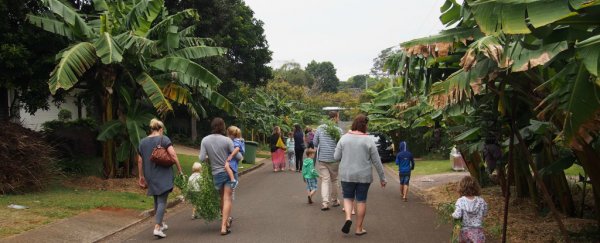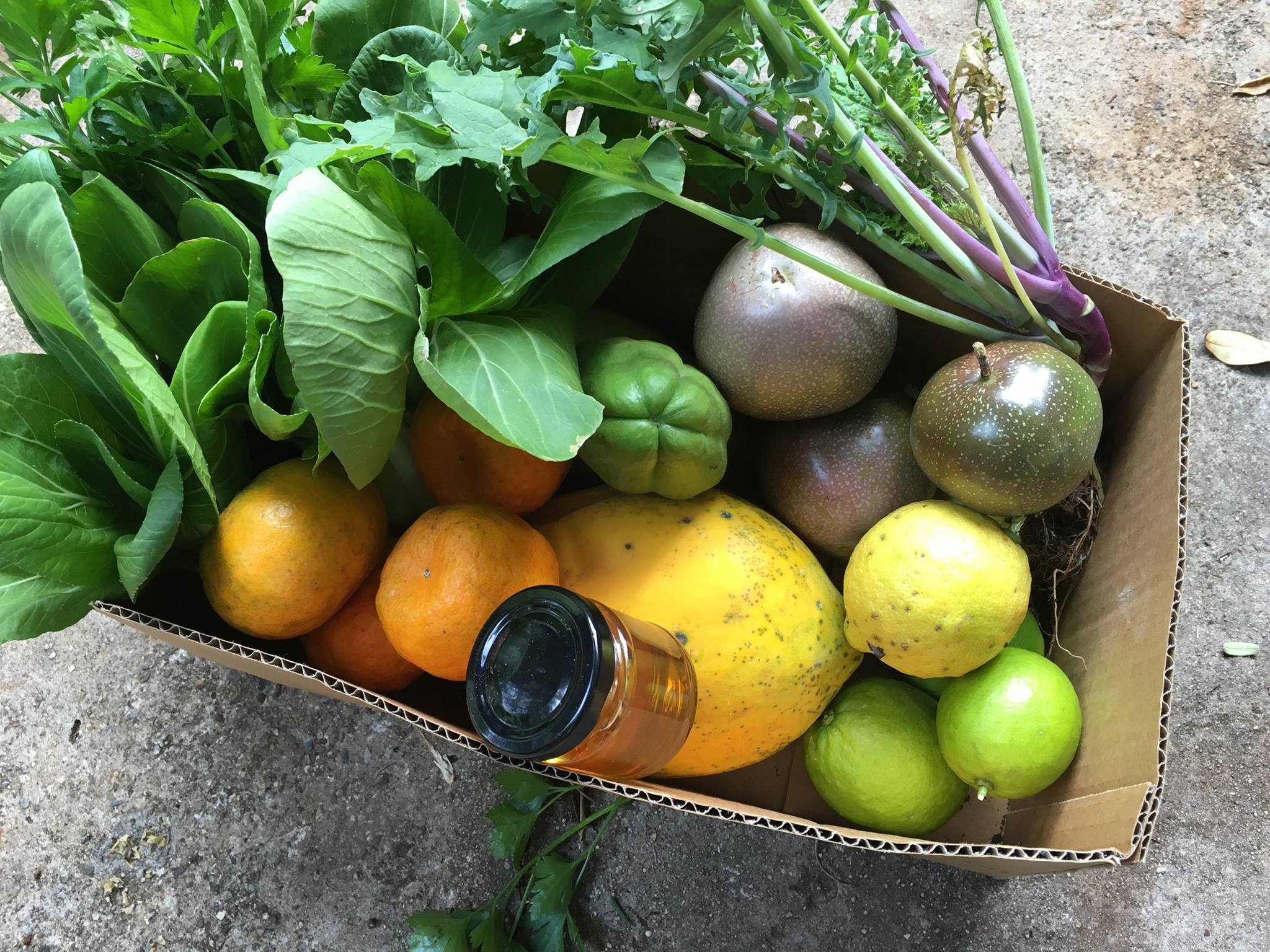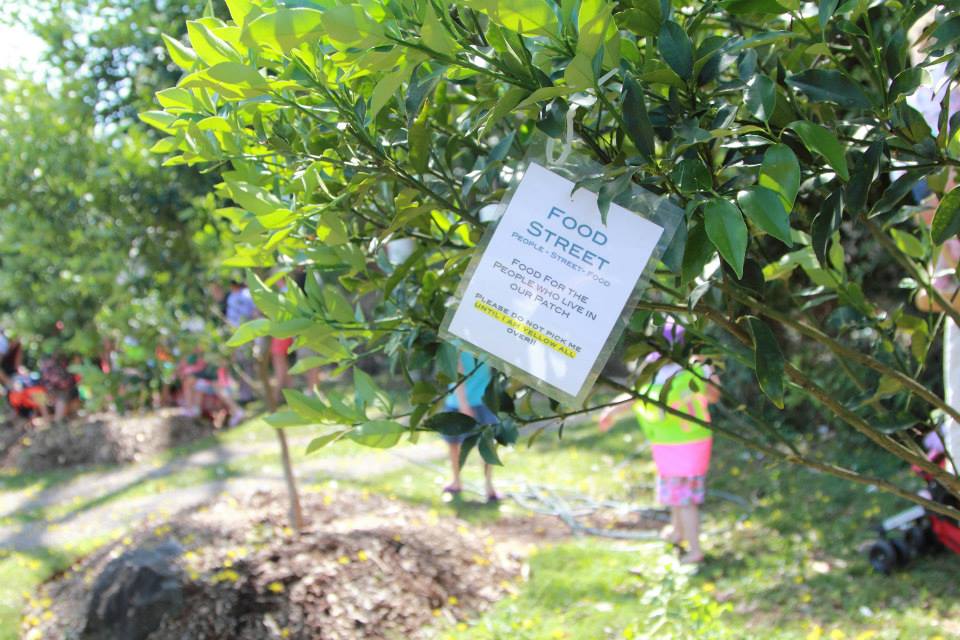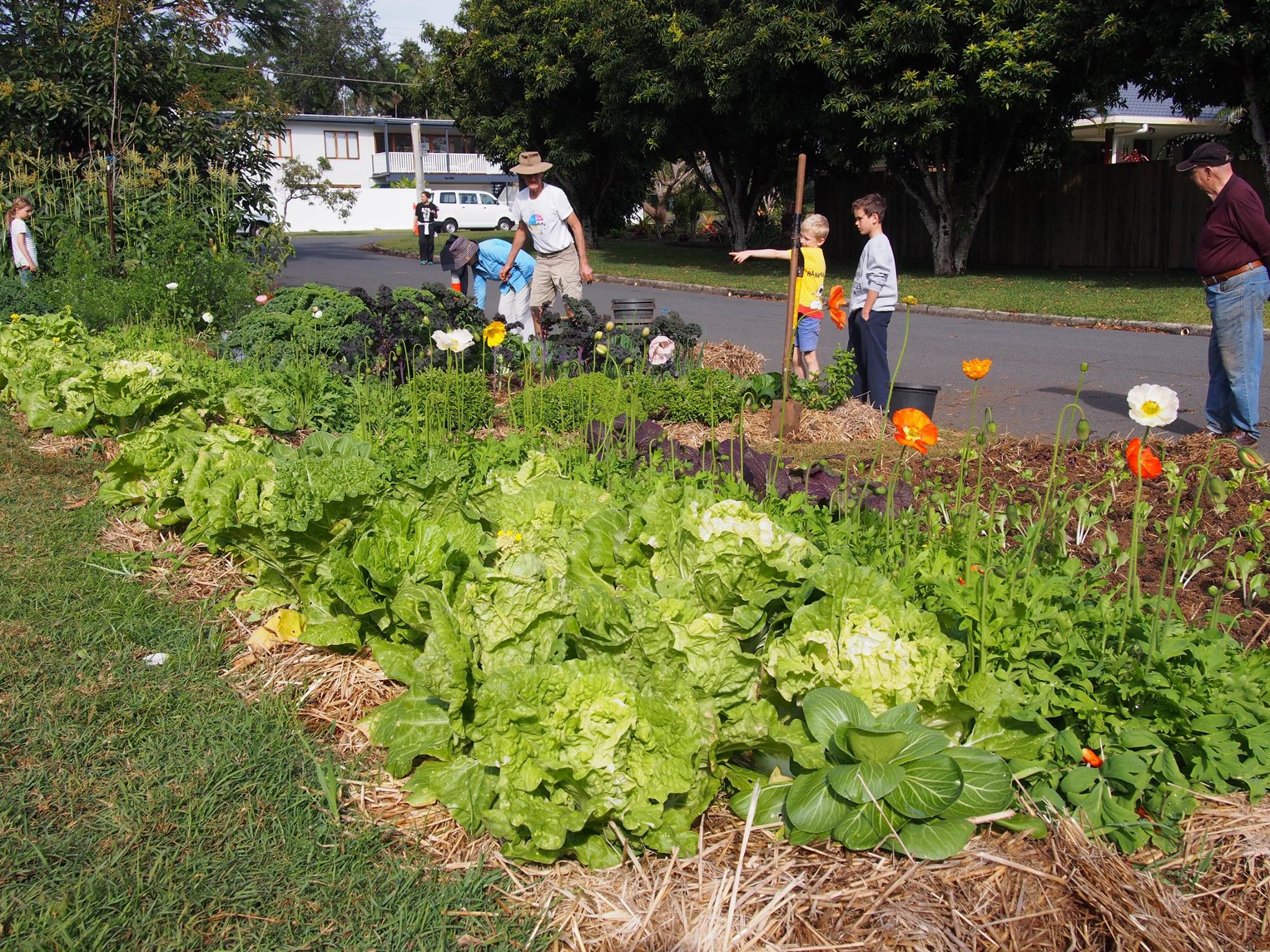Over the past decade, innovative community gardens and vertical farms have been popping up all over the planet, as our climate steadily becomes hotter and, in many areas, drier.
But a suburb in Australia has taken things back to basics, turning their streets into an open-source garden that supplies the community with free fruit, vegetables, and herbs. Last year, the street produced 900 kg of bananas and 300 cabbages.
The project, which is called Urban Food Street, started in 2009, when residents in the tropical north-eastern Queensland suburb of Buderim became outraged about the price of limes, which were retailing for A$1.50 to $2.00 each at the time.
A couple of neighbours decided to plant 10 lime trees on the nature strip to start their own supply.
From there, the idea spread, and now 11 streets in Buderim have turned their nature strips into gardens that grow everything from mint, capsicums, tomatoes, thyme, kale, pomegranates, and potatoes.
"It started with us deciding to plant limes, and then it evolved into this notion that if we put the limes out on the nature strip people could pick a lime for whatever they need it for," graduate architect and one of the founders of Urban Food Street, Caroline Kemp, told the Australian Broadcasting Corporation (ABC).
The seasonal food grown on the streets is available to everyone freely in the community, even those who haven't planted anything themselves.
"Quite often the households that aren't growing will provide a hose to water or some other skill - they might have a skill in jam-making and then that will go on tables at working bees and for people to buy," said Kemp.
"We see contribution as a fluid thing."
Although the street-side gardens aren't capable of growing everything that a family needs - residents still buy things like bread and meat - it's become a good way for the community to quickly and easily add fresh produce into their meals, without having to go down to the shops.
"One of the problems with cooking is you never have the herbs you need at 8 o'clock at night, but now we have the neighbourhood, and you just go down and you just take whatever you need for that meal," co-founder of the project and horticulturalist Duncan McNaught told the ABC.
"That keeps a car off the road, makes it easier for the meal, and it's also healthier because you're walking. That's what the neighbourhood is about: walking and engaging."
The ultimate goal for the suburb is to make it so that the gardens offer affordable and sustainable food in a time where we're rapidly running out of resources such as arable land and fresh water - as well as provide a comfortable place for residents to live.
"We live in a hot spot. Vegetation provides shade. Shaded surfaces are 11 to 25 degrees [Celsius] cooler than the peak temperature of unshaded hard surfaces such as bitumen and concrete," Kemp told local newspaper the Sunshine Coast Daily last year.
"This is about activating a residential street and getting people engaged and active in their local area and, of course, it's about food, knowing where your food comes from and food security."
One of the highlights of the project isn't just the fact that people have fresh basil to throw on their pizza at night, but that the neighbours have all gotten to know each other now - and that they no longer need a park in the area.
"Almost every afternoon, this street fills with the neighbourhood children," Kemp told the ABC. "They ride bikes, they play ball. Adults will be sprawled on blankets across the lawn."
According to the Urban Food Street Facebook page, the group is now in the process of coming up with a program to help other streets around the world grow their own food sustainably and set up a community food share program.
And they're not the only ones looking at more sustainable ways to grow food. This huge indoor vertical farm being built in New Jersey will use 95 percent less water than field farming, and promises to be 75 times more productive.
And this world-first farm in the intense South Australian desert grows vegetables using nothing but Sun and seawater. Last year, a Spanish concept for a floating farm also offered a way to produce 10 tonnes of food - including vegetables, fruit, and fish - each year.
While all of these projects are incredible, it's nice to see innovative ideas about growing food hitting the streets. Sometimes the best way to make a change in the world is just to start something.



